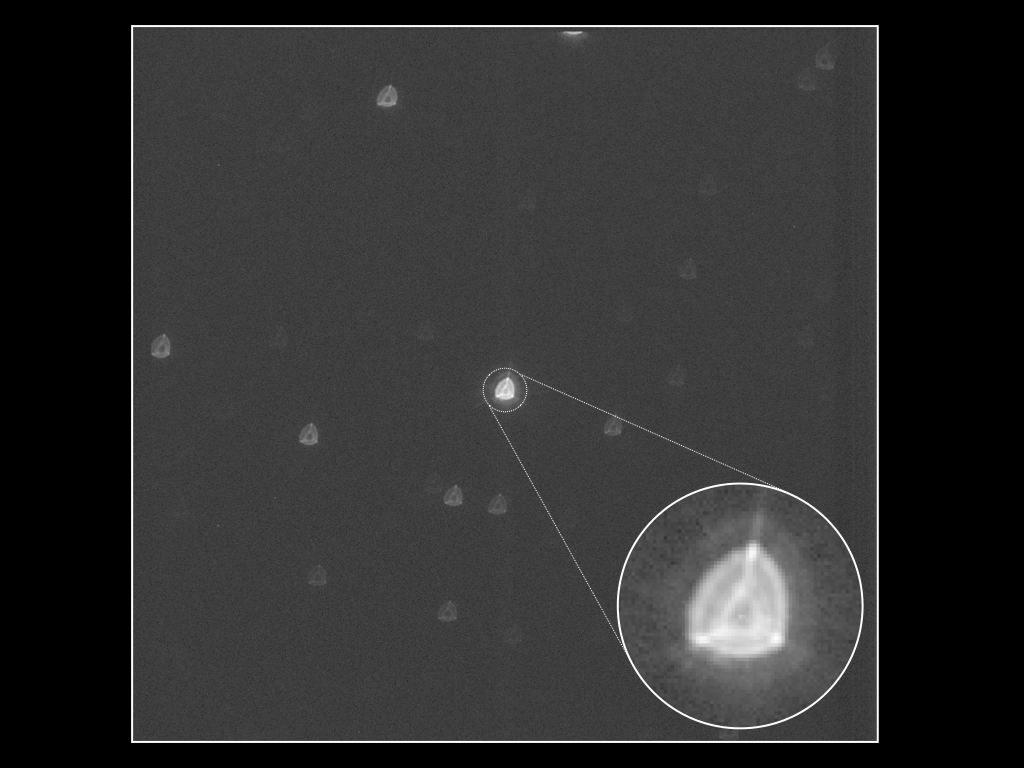Europe's planet-hunting CHEOPS telescope beams down its first image. It's better than expected
The first image from CHEOPS is blurry and perfect for planet-hunting.
A planet-hunting probe has taken its first photos, and they're better than expected!
CHEOPS (CHaracterising ExOplanets Satellite), a planet-hunting exoplanet telescope from the European Space Agency (ESA), launched into space on Dec. 18, 2019, atop a Soyuz rocket from Guiana Space Center in French Guiana.
After the successful launch, the telescope's cover opened on Jan. 29, 2020; the team behind the satellite waited with bated breath for the device to snap its first images, confirming that everything was working properly and nothing was damaged during launch.
Related: The Strangest Alien Planets (Gallery)
"The first images that were about to appear on the screen were crucial for us to be able to determine if the telescope's optics had survived the rocket launch in good shape," Willy Benz, a professor of astrophysics at the University of Bern, Switzerland, and Principal Investigator of the CHEOPS mission, said in a statement about this waiting period. "When the first images of a field of stars appeared on the screen, it was immediately clear to everyone that we did indeed have a working telescope."
But, not only did these first images confirm that CHEOPS is working properly – , they also turned out better than anticipated. The first pictures, Benz said, "are smoother and more symmetrical than what we expected from measurements performed in the laboratory." He added that "these initial promising analyses are a great relief and also a boost for the team."
The images themselves are blurry, but that was expected as the telescope had been intentionally defocused to allow for better photometric precision: Defocusing the telescope allows for greater precision because it smooths out the light over many pixels, according to the statement.
Breaking space news, the latest updates on rocket launches, skywatching events and more!
So, while the image isn't super clear, it's precise, which is necessary for the probe to spot small changes in the brightness of stars outside of our solar system — observations that will help the probe to spot exoplanets transiting, or passing, in front of their star.
The team will continue to test the telescope and scrutinize the images it takes over the next couple of months. "We will analyze many more images in detail to determine the exact level of accuracy that can be achieved by CHEOPS in the different aspects of the science program," David Ehrenreich, CHEOPS project scientist at the University of Geneva, Switzerland, added in the statement. "The results so far bode well."
CHEOPS is designed to spot transiting exoplanets (planets outside of our solar system passing in front of their star) and characterize them. The probe will "make high-precision observations of the planet's size as it passes in front of its host star," according to a mission description from the European Space Agency (ESA) officials. "It will focus on planets in the super-Earth to Neptune size range, with its data enabling the bulk density of the planets to be derived — a first-step characterization towards understanding these alien worlds."
- 10 Exoplanets That Could Host Alien Life
- 7 Ways to Discover Alien Planets
- How Habitable Zones for Alien Planets and Stars Work (Infographic)
Follow Chelsea Gohd on Twitter @chelsea_gohd. Follow us on Twitter @Spacedotcom and on Facebook.


Chelsea “Foxanne” Gohd joined Space.com in 2018 and is now a Senior Writer, writing about everything from climate change to planetary science and human spaceflight in both articles and on-camera in videos. With a degree in Public Health and biological sciences, Chelsea has written and worked for institutions including the American Museum of Natural History, Scientific American, Discover Magazine Blog, Astronomy Magazine and Live Science. When not writing, editing or filming something space-y, Chelsea "Foxanne" Gohd is writing music and performing as Foxanne, even launching a song to space in 2021 with Inspiration4. You can follow her on Twitter @chelsea_gohd and @foxannemusic.

